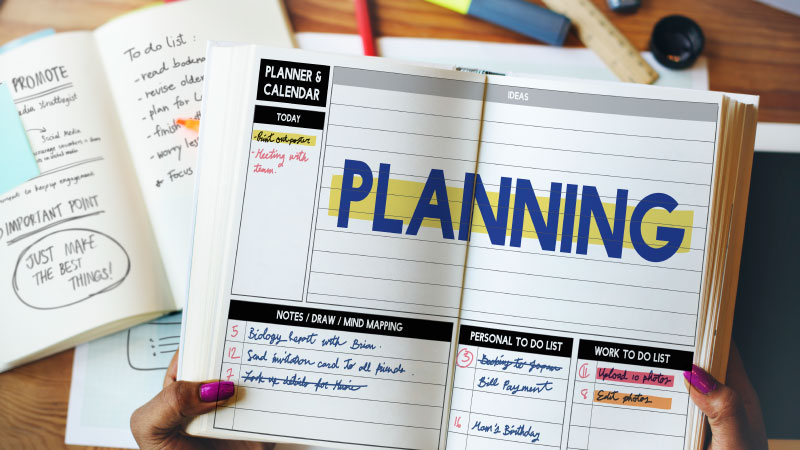In the fast-paced world of event management, where success relies on perfect timing and attention to detail, contingency planning is an essential skill for ensuring an event’s smooth execution despite potential setbacks. From minor inconveniences to significant emergencies, every event is vulnerable to unexpected issues, making it critical for event planners to have solid backup plans in place. This article dives into why contingency planning is indispensable for event management, how to create a robust plan, and the latest practices and tools that make preparation more effective than ever.

The Critical Role of Contingency Planning in Event Management
A contingency plan acts as a safety net, helping organizers maintain control over the event, ensuring the safety and satisfaction of attendees, and protecting the reputation of the organizing team. Here are the primary reasons why contingency planning is non-negotiable:
- Ensuring Safety and Security
The top priority for any event organizer is the safety and security of attendees, staff, and vendors. In an emergency, such as a fire, natural disaster, or health crisis, having an established safety plan allows for quick action to guide attendees to safety, potentially saving lives and minimizing harm. - Maintaining Event Continuity
For large-scale events, continuity is key to success. A well-prepared contingency plan ensures that the event can adapt to unexpected issues, such as technical malfunctions, transportation delays, or no-shows by key speakers or performers. By planning for alternative solutions, the event can continue with minimal disruption, maintaining a seamless experience for attendees. - Minimizing Financial Impact
Events are significant financial investments, and unanticipated disruptions can result in substantial losses. With a contingency plan, event organizers can often mitigate these risks through insurance, alternative arrangements, and protocols for postponement or cancellation. - Protecting Brand Reputation and Building Trust
Handling emergencies with professionalism strengthens the credibility of the event organizer. Attendees, sponsors, and partners are more likely to trust a company that can navigate challenges with resilience and decisiveness. Contingency planning showcases a commitment to high standards and preparedness, enhancing the organization’s reputation. - Compliance and Legal Protection
Many events are required to have contingency plans to meet legal and regulatory standards. Failing to comply can lead to fines, lawsuits, and damage to the organizer’s professional reputation. Meeting or exceeding these requirements is a proactive approach that also demonstrates commitment to attendee welfare.
Key Components of an Effective Contingency Plan
Creating a comprehensive contingency plan requires careful analysis and preparation. Here are the critical elements that should be included:
- Risk Assessment and Identification Conducting a risk assessment is the first step in contingency planning. This process involves listing all possible risks, categorizing them (e.g., natural, technical, logistical, medical), and evaluating their probability and potential impact on the event. New advancements in event management software can help assess risks more accurately, using predictive analytics to anticipate issues based on past events or trends.
- Alternative Solutions and Backup Resources
Identifying alternative solutions for key event elements, such as venues, suppliers, speakers, and even AV equipment, is essential. Maintain a list of backup vendors and contacts who can step in on short notice, and consider securing contracts that allow for flexibility, such as rescheduling or refunds. - Clear Communication Protocols
Communication is critical in any crisis. A contingency plan should outline how to communicate with attendees, staff, and vendors. This includes pre-written messages and protocols for distributing information via social media, email, text alerts, or mobile event apps. Leveraging tools like automated messaging systems allows planners to keep stakeholders informed and calm in an organized manner. - Assigning Roles and Responsibilities
Define roles within the contingency plan so that each team member understands their responsibilities in an emergency. This reduces confusion and streamlines decision-making. Ensure that team members receive training and access to resources, such as contact lists and emergency kits, to help them execute their roles effectively. - Insurance and Financial Protection
Event insurance is increasingly a standard component of contingency planning, covering risks from cancellations and venue damage to liability concerns. Consider insurance that addresses weather disruptions, injuries, or property damage, as well as “force majeure” clauses to protect against uncontrollable circumstances. - Post-Event Evaluation
After the event, conduct a thorough review to assess the effectiveness of the contingency plan. Gather feedback from the team and stakeholders to identify areas for improvement. This post-mortem helps refine the plan for future events, ensuring it evolves with emerging challenges and best practices

.
Modern Tools and Technologies for Contingency Planning
The event industry is quickly adopting new technologies to help streamline contingency planning and crisis response. Here are some of the latest tools:
- AI and Predictive Analytics
Artificial intelligence tools can analyze historical data and detect potential risk factors, helping planners anticipate and address issues before they occur. For example, AI can provide weather forecasts with high accuracy, allowing event organizers to plan around probable weather disruptions. - Real-Time Communication Platforms
Mobile event apps and SMS alert systems keep attendees and staff informed during emergencies. Tools like Whova, Eventbrite, and EventMobi offer real-time communication capabilities, allowing organizers to send timely updates and safety instructions directly to attendees’ phones. - Event Management Software
Platforms like Cvent and Bizzabo allow planners to manage logistics, track changes in real time, and adjust plans as needed. These tools can be invaluable in quickly implementing contingency plans when necessary. - Digital Maps and Virtual Tours
For large events, digital mapping software provides attendees and staff with accurate venue layouts, including emergency exits and assembly points. Virtual tours also help familiarize security and emergency personnel with the venue layout in advance, improving response times in case of evacuation.
Building Resilience Through Scenario Planning
One of the most effective approaches to contingency planning is scenario-based planning. In this method, event planners develop responses to hypothetical situations that could affect the event, such as:
- Weather-Related Scenarios
Develop protocols for outdoor events affected by adverse weather, such as relocating or postponing the event. Having access to reliable weather forecasts and shelter alternatives is essential. - Health and Safety Scenarios
If a health-related emergency occurs, such as an injury, food poisoning, or even a pandemic-related concern, establish procedures for first aid response, crowd control, and isolating affected individuals. Ensure you have medical personnel on-site and understand local health regulations. - Technical Failures
Technical issues, like power outages, microphone malfunctions, or connectivity disruptions, are common but manageable. Keep spare equipment, test AV systems beforehand, and have a technician on-site to resolve any issues promptly. - Security and Crowd Control
For high-profile events, security issues may arise. Working with security experts and training staff in crowd management and conflict de-escalation can prevent small issues from becoming major problems.

Implementing Continuous Improvement
Effective contingency planning is a dynamic process that requires regular updates and improvements. Here are steps to ensure your plan remains current:
- Update Contacts and Resources Regularly
Ensure that emergency contact lists, resource suppliers, and backup personnel are up to date. Verify availability with backup vendors periodically and confirm terms. - Schedule Regular Drills and Training
Run regular drills to test the readiness of your team and vendors, simulating common emergency scenarios. Review their response times and adaptability, and adjust training or roles as necessary. - Engage Stakeholders in Feedback Loops
After each event, collect feedback from staff, attendees, and partners regarding the contingency measures. Honest feedback provides insights into what worked and where improvements are needed.
Contingency planning is more than just a backup strategy; it’s a proactive approach that builds resilience, instills confidence, and elevates the professionalism of event management. By prioritizing safety, efficiency, and preparedness, event organizers can deliver memorable experiences that withstand the unexpected, reinforcing their reputation and the trust of attendees. With ongoing improvements and the adoption of modern tools, contingency planning empowers event planners to turn potential setbacks into seamless solutions, making every event an outstanding success.



